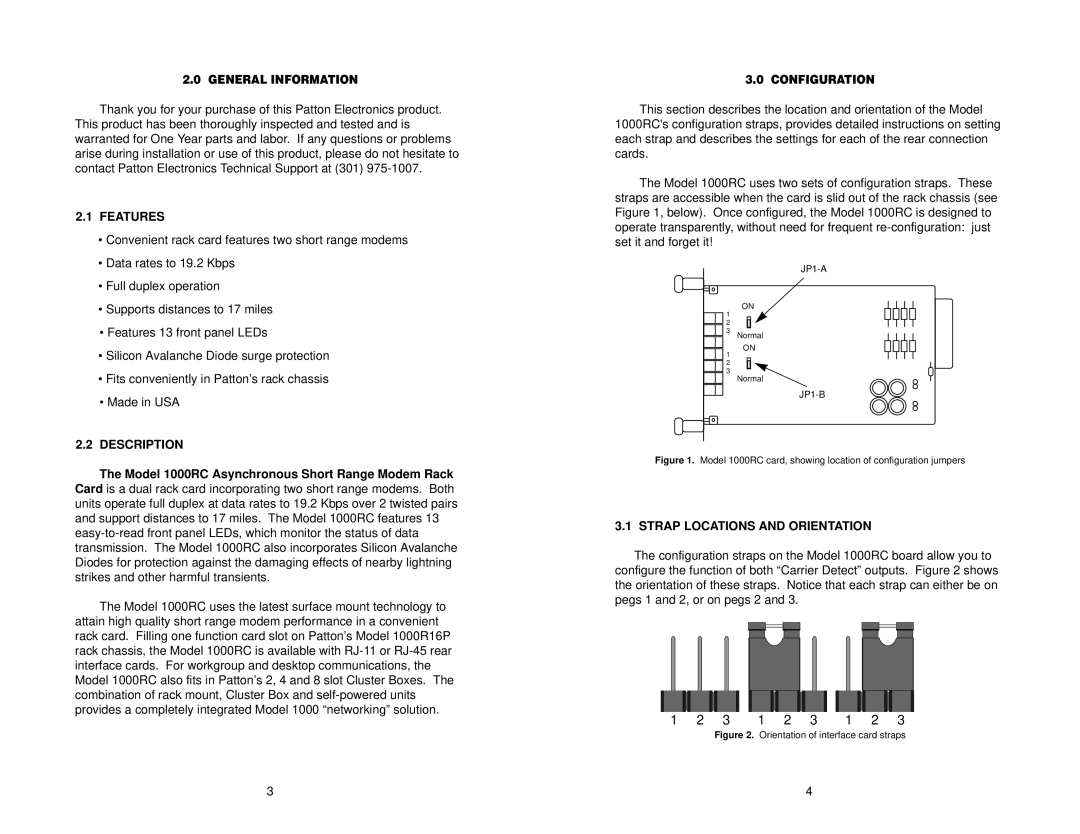
2.0 GENERAL INFORMATION
Thank you for your purchase of this Patton Electronics product. This product has been thoroughly inspected and tested and is warranted for One Year parts and labor. If any questions or problems arise during installation or use of this product, please do not hesitate to contact Patton Electronics Technical Support at (301)
2.1 FEATURES |
• Convenient rack card features two short range modems |
• Data rates to 19.2 Kbps |
3.0 CONFIGURATION
This section describes the location and orientation of the Model
1000RC's configuration straps, provides detailed instructions on setting each strap and describes the settings for each of the rear connection cards.
The Model 1000RC uses two sets of configuration straps. These straps are accessible when the card is slid out of the rack chassis (see Figure 1, below). Once configured, the Model 1000RC is designed to operate transparently, without need for frequent
• Full duplex operation |
• Supports distances to 17 miles |
• Features 13 front panel LEDs |
1
2
3
ON
Normal
• Silicon Avalanche Diode surge protection |
![]() 1 2
1 2 ![]() 3
3
ON
• Fits conveniently in Patton’s rack chassis |
• Made in USA |
2.2 DESCRIPTION |
The Model 1000RC Asynchronous Short Range Modem Rack Card is a dual rack card incorporating two short range modems. Both units operate full duplex at data rates to 19.2 Kbps over 2 twisted pairs and support distances to 17 miles. The Model 1000RC features 13
The Model 1000RC uses the latest surface mount technology to attain high quality short range modem performance in a convenient rack card. Filling one function card slot on Patton’s Model 1000R16P rack chassis, the Model 1000RC is available with
Normal
Figure 1. Model 1000RC card, showing location of configuration jumpers
3.1 STRAP LOCATIONS AND ORIENTATION
The configuration straps on the Model 1000RC board allow you to configure the function of both “Carrier Detect” outputs. Figure 2 shows the orientation of these straps. Notice that each strap can either be on pegs 1 and 2, or on pegs 2 and 3.
1 | 2 | 3 | 1 | 2 | 3 | 1 | 2 | 3 |
Figure 2. Orientation of interface card straps
3 | 4 |
